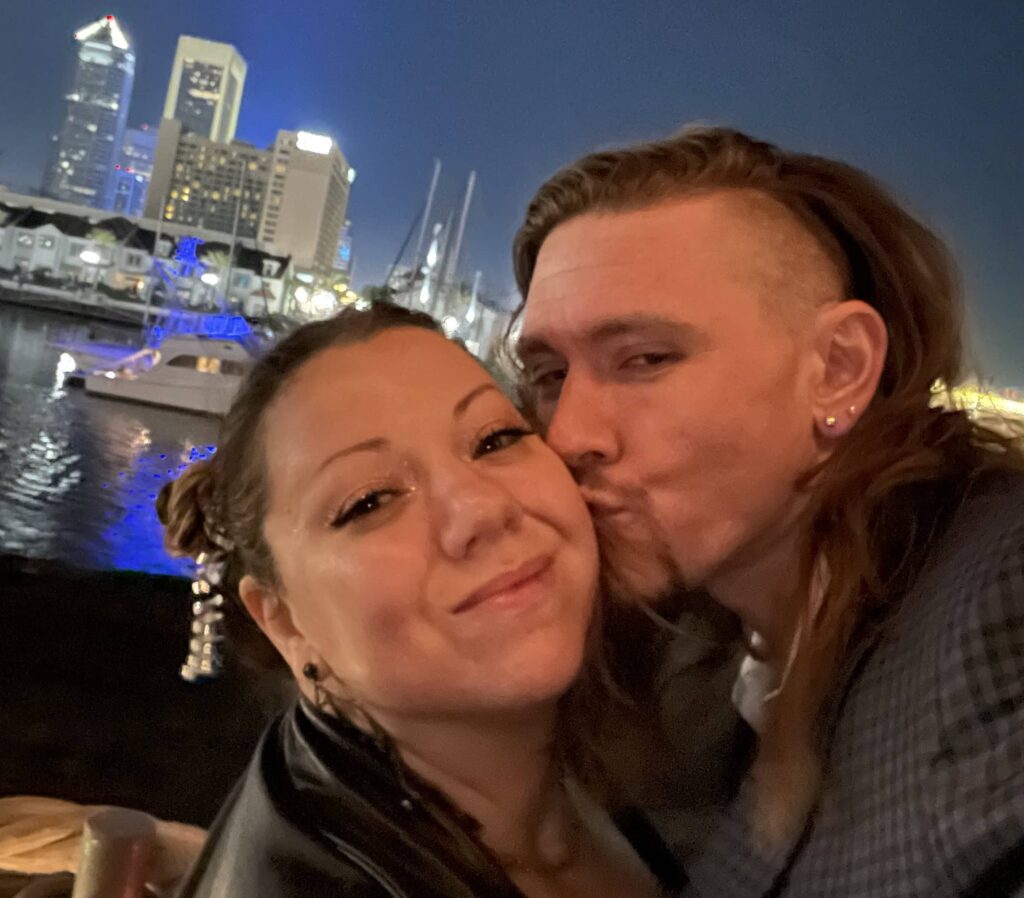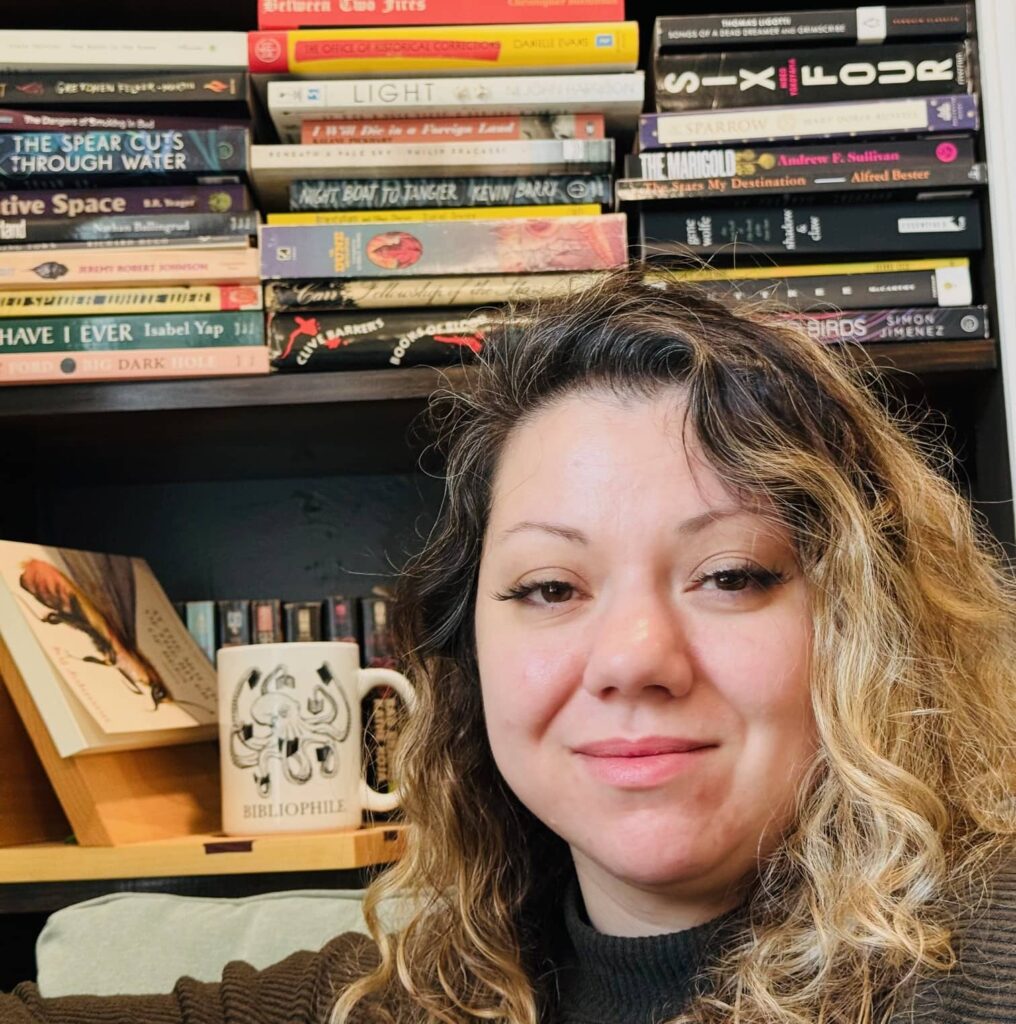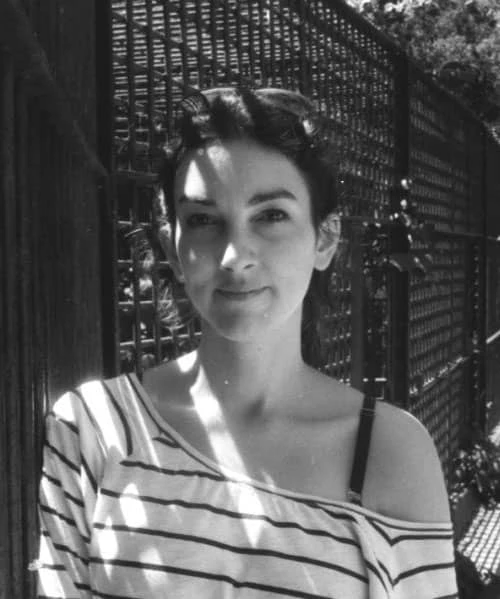
In “The Ghost Tenders of Chornobyl,” Sasha is one of many ghosts who reside in the exclusion zone and tend to the forest. The ghosts nurture the trees and moss, help the fungi grow, and care for the animals. It’s a story that breathes with life and transformation: the rewilding, the evolution of friendships, the cycles of life. Sasha had a life of transformation too. There was the body he hated, and the body he adored, though the price was his father’s love.
Throughout the story, always, there is the constant background vibration and thunderclap of war and the “the shadow of an insatiable empire.” Red sunsets blend with burning fires and clouds mix with smoke. And yet there is also always so much life. The dead live on in their own ways, and even the decaying molecules leaking from the broken reactor are converted into radioactive nourishment for new life. This description of the story is also how it leaves the reader. Shaken by the vast violence but transformed by the tiny moments of beauty and timeless nature.
Nika Murphy is a Ukrainian-born writer of speculative fiction whose stories appear in Clarkesworld, Apex, and Luna Station Quarterly, and reviewed on Reactor (formerly tor.com) and Locus. Nika holds an MFA from Arcadia University and resides in Florida with her family. You can find her online at nikamurphy.com.
Marissa van Uden: Thank you for joining us to talk about this truly gorgeous and impactful story. To start with, could you tell us a bit about the genesis for this tale? How did the idea come about, and how did you develop it from there?
Nika Murphy: Thank you, you’re very kind. I was mostly in a state of shock in the weeks following February 24, 2022. The Russian invasion of Ukraine was devastating and I needed an outlet for my frustrations and helplessness. The story spilled out of me. It was raw and bloody and rough and was (rightfully) rejected. I let it simmer for a few months. Time and distance helped. Once I found the focus and was able to channel my anger into the narrator, the story finally worked. Sasha was the key. His dysphoria led him to his death and rebirth and ultimately, acceptance. The war killed him, but it didn’t—couldn’t—take away his identity, nor his humanity.
MVU: This thread in the story is so strong. I think you did an amazing job. Another important character is Lyudmyla, who I adore. She is absolutely fearless in the face of the enemy intruder, and I love how menacing she is as she treats him like a child: making him a sandwich, scolding him, reducing him to tears. She is ancestral strength and a “statue of freedom, of power” while simultaneously “just a little old babusya.” Was she inspired by any real-life people you know or admire? How did she take shape during the writing?
NM: Lyudmyla was my late grandmother’s name, but the character is an amalgamation of all the fearless women in my life, of all the fearless babusyas and babulyas all over Ukraine. There was a video going around early on in the invasion of a young Russian soldier being surrounded and fed by a bunch of Ukrainian women. That’s the epitome of the Ukrainian spirit. We just want to feed you and give you a glass of vodka and celebrate life and humor and freedom with you, and we'll fight for that and defend it till our dying breath, just like Lyudmyla.
MVU: Beautiful. There is a passage in the opening that juxtaposes the violence of war with the fragility of the smallest living creatures: “I sink my fingers into the black soil as the earth rumbles from explosions or shelling or crashing drones. I am learning to tell the difference in the vibrations. Worms wiggle and burrow their way to the surface through my sheer palms.” I love this focus, which continues all the way through the story, as the losses of not only species but individual wildlife is such an invisible and often unacknowledged side of war. Is it something you think about a lot, or have personal connections to? I’d love to know what compelled you to write about it.
NM: War doesn’t just destroy people, monuments, cultures, languages. It destroys everything in its path, from the smallest seed to the tallest tree. It’s not enough to simply bear witness and be outraged and post on social media. You have to do something tangible to protect all life, to protect your seeds and your trees and your neighbors. I hated watching the war unfold from my couch, unable to do anything. I wanted to pick up a rifle and fight. Hopefully, I conveyed that feeling in my story.
MVU: I think you certainly did. Lyudmyla knows Sasha is present “in the superstitious way most Ukrainian people do. I am her barabashka, a noisy spirit who keeps her company, keeps her safe.” As a Ukrainian-born American, what kinds of cultural differences do you see with how the ghosts and spirits are treated? Does Ukrainian fiction and folklore tend to see ghosts as more protective and nurturing figures than US culture, which I suspect is more influenced by the entertainment industry than folklore?
NM: I do think American entertainment has an outsized influence on literature, sometimes to its detriment. Growing up, I read a lot of books and fairy tales in translation from around the world. I had a book of Italian fairy tales and African fairy tales, and of course Grimm’s and Anderson’s stories, even The Wizard of Oz. I took a workshop once with R.B. Lemberg, an amazing Ukrainian speculative fiction writer, translator, folklorist, and human, who taught me about Propp’s functions and the Tale Type Index. When I started to look at the variety of tales told, the patterns I found weren’t structural, but emotional. What all folktales share are the same fears, the same dreams. We’re all afraid of the dark, of what lies beyond death. We all want to be loved and accepted. How you get there, how you show that, that’s what makes a story good. Not following some formula (looking at you, Hero’s Journey and Save the Cat).
 May everyone be as lucky as I am to have a supportive partner blessed with golden retriever energy.
May everyone be as lucky as I am to have a supportive partner blessed with golden retriever energy.
MVU: Do you have any favorite Ukrainian folktales or superstitions that bring you special joy or remind you of your family and childhood?
NM: I actually have a tattoo of Baba Yaga and her chicken-leg hut on my calf. She’s my favorite folktale character because she appears in many different stories, and you never know which version of her you’ll get. Depending on her mood, she might eat you, or she might help you, or she might give you impossible tasks. She’s not evil or good, but she’s not neutral or indifferent either. To me, Baba Yaga represents nature. Nature can be cruel and also life giving and beautiful, full of wonder and mystery. That kind of complexity in a character always brings me joy and something I strive for in my own stories.
MVU: Amazing. I love that you carry her with you. This story is threaded with hope throughout the violence, and not in the wishful thinking sense but in a very physical and immensely powerful way: there is the human community of resistance on the ground, and there is the timeless, reclaiming force that is nature. “The Milky Way shines electric above me and the stars chatter with the mushrooms below. They speak the language of eons. To them, we are not even a blink, a breath. What is my revenge against millennia of tending to the earth?” Are these places you look to for comfort and hope during this violent and wasteful era? What else gives you hope in humanity and the future of our natural world?
NM: I’ll tell you where I don’t look for comfort or hope. Social media. Yes, I know there are forums and discords where people find community, but you have to go outside and literally touch grass sometimes. The coolest people I’ve ever met weren’t online at all. I found them at local events, at neighbors’ houses, in mutual aid groups, or while volunteering. These days I try to focus on spending time with my family, fostering the friendships I have, being online less, and touching grass more. When you get out and start talking to people in real life, you realize things aren’t as bleak as the posts in your doomscrolling feed would have you believe.
MVU: Wise words and so very true! I saw that you are also a slush reader for Escape Pod. I’m a huge fan of slush readers and the often invisible but absolutely essential work they do in the background of every publication. For new writers who aren’t familiar with the work, could you talk a little about what slush reading looks like for you at Escape Pod, and how it has affected your own writing?
NM: I really admire Escape Pod’s process because the stories I read come to me blinded, meaning all identifying information is removed from the document. I don’t see the cover letter, the author’s name, nothing. It definitely makes things more egalitarian. Being a first reader has taught me that my stories don’t have to be perfect, but the good elements have to be so good, they overshadow any imperfections. That’s the difference between the stories that I pass up to the assistant editor versus the ones I don’t. The other thing I’ve learned is to not take rejections personally. Sometimes a perfectly good story is just not the right fit.
 Not pictured: 300 books on the TBR list and another 500 overflowing on every surface in my house.
Not pictured: 300 books on the TBR list and another 500 overflowing on every surface in my house.
MVU: I’ve been enjoying reading your other fiction in preparation for the interview. I especially enjoyed “The Art of Navigating An Affair in a Time Rift” published in Clarkesworld, and the empathic and non-judgmental way you showed the character navigating the different desires in her life. What inspired this story, and what was the revision process like for it? Do you use critique partners to make sure everything in a complex story like this works?
NM: Fun fact: that was my publishing debut! I’d never been published anywhere before that story came out. I think I passed out when I saw the acceptance email in my inbox. That story went through a number of iterations before its final form. I had tried to workshop it in critique groups, and the feedback was always dismal, so at one point I just said fuck it, I know what this story needs and I’m going to revise it based on my gut feelings. I have two or three people I really trust with my work. If I’m feeling stuck, I might share with them, but otherwise I trust myself for most of my revisions. That process can take anywhere from a couple weeks to a couple years. I have stories I wrote over a year ago that I haven’t figured out how to fix yet. But I just let them cook until I get an epiphany. The trick is to have waterproof notepads in the shower.
MVU: Thank you so much for joining us today. Could you leave us with some hints about any projects you are working on next, or new publications that readers should look out for? Where else can they find you?
NM: Thank you for all your thoughtful and interesting questions. This was my first interview, and I had a lot of fun! If you don’t mind, I’d love to take a moment to shout out my amazing sensitivity reader, Rue Dickey. They were instrumental in ensuring Sasha’s character development felt authentic. He also raised nearly half a million dollars defending trans rights in Texas. Please check out their website and hire him: https://ilananight.space/. Also, if you like stories about trans guys and fungus, I recommend reading “MYCOPHILIA” by C.B. Blanchard in Seize the Press. I have a story coming out in that magazine next month (I think?), and it also follows themes of hope and perseverance in the face of immeasurable obstacles. My website is always a good place to keep up with my whereabouts and publications. Otherwise, I’ll be at WorldCon in Glasgow this summer and hope to see some friends there!
MVU: Fantastic recommendations. And yes, “MYCOPHILIA” is a personal favorite of mine, and I 100% agree more people should read this story. Thank you again!









